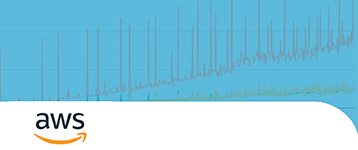Author: Smile Digital Health
Clinicians have long understood that their efforts to provide optimal care are often hamstrung by their inability to access patients’ complete medical history in real-time. Information silos, a lack of interoperability and a preponderance of information blocking have plagued the healthcare industry for decades, making it difficult to provide timely high-quality, data-driven care and even more difficult to accurately measure patient outcomes.
A recent study published in the Journal of the American Medical Informatics Association sought to better understand how improving clinical data sharing might impact quality measurements, and in turn, patient safety and the quality of care they receive. As the industry shifts toward value-based care arrangements, improving electronic clinical quality measures (eCQMs) is becoming ever more critical and is a key component in ensuring programs like the Merit-based Incentive Payment System (MIPS) are successful and become more widespread.
Comparing Single Source Electronic Health Record (EHR) Data to Longitudinal Health Information Exchange (HIE) Data
The JAMIA study examined 12,994 quality measure calculations for 14 quality metrics from 5,300 patients who received care at more than one of the sampled 53 health facilities in Kansas state in 2018. Comparing single-site EHR data to longitudinal data from the Kansas HIE added to the single-site data, which is operated by the Kansas Health Information Network (KHIN), the researchers found discrepancies in 15% of all quality measure calculations, affecting nearly 1 in 5 patients. Significant differences in quality measure calculations were observed for 13 of the 14 measures.
Across different types of organizations and across a wide variety of quality measures commonly included in MIPS, the inclusion of HIE data showed that EHR quality measurements are often limited by incomplete information. Quality calculations differed due to missing diagnoses and a lack of complete information on medications, immunizations, lab results, previous procedures and vital sign information. In this study most measures show favorable changes in compliance, the use of high-risk medications in older adults (ie, CMS156) shows a 4.6% decrease when adding HIE data. This variance could move an organization from the 90th to the 30th percentile of performance based on 2019 benchmarks.
Broadly speaking, the inclusion of longitudinal, multi-source data improved measures favourably in terms of compliance, though instances of high-risk medication use in older adults were also identified. In any case, having more accurate measurements is valuable for providers as they seek to improve the quality of care they provide and avoid duplicate testing. In addition there is potential to help increase performance ratings and reimbursements as well as more accurately highlight areas for quality improvements
Easing the Administrative Burden of Reporting and Decoupling eCQM Calculations from Specific EHRs
Though not the core focus of the study, the researchers noted that moving away from EHR reporting and toward standards-based data exchange has the potential to relieve clinicians from spending hours on reporting, which commonly interferes with spending more time directly providing care. Previous research from 2015 estimated that reporting quality measures alone takes up 785 hours per physician and costs practices over $15.4 billion every year.
Furthermore, decoupling eCQM calculations from EHRs has the potential to eliminate the inaccuracies and discrepancies that flow from the wide-ranging user experience and data form field decisions from specific EHR vendors.
Underscoring the Need for Greater FHIR Adoption and Realizing the Promises of the Internet of Health
The results of this study will come as no surprise to anyone familiar with the data standardization and interoperability challenges facing the healthcare industry. But quantifying the benefits of improving clinical data sharing is instrumental to furthering the cause.
Though this study focused specifically on an HIE, the results underscore how greater FHIR adoption can help overcome the shortcomings of calculating quality measures using single-site EHRs, which are often limited by incomplete information and inadequate interoperability. Yet, prior JAMIA research has shown that HIEs alone don’t necessarily bridge the gaps in clinical data information sharing.
With access to more complete information and more accurate quality measures, clinicians would be better able to understand the efficacy of their interventions and improve the quality of care they provide over time. With a more complete picture of patients’ health, care could become more proactive and more patient-centric, avoiding the unnecessary communication, duplicate testing, and frequent mismatching of records that’s common today.
Improving the accuracy of quality calculations goes hand-in-hand with improving patient safety and care quality—easing the administrative burden of reporting, and laying the groundwork for more ubiquitous value-based care arrangements. But more accurate quality measures require multi-source, longitudinal calculations, which are only possible with improvements in interoperability. This makes a robust implementation of FHIR, the emerging global standard for health data exchange, a must-have for US health systems.
Follow us on social:

BENCHMARKING SMILE Digital Health AT SCALE IN AWS
Benchmarks are the worst. Yet, there is a lot of trust afforded to them. As a techie-at-heart benchmarks are the bane....
Read More >>

